
NPS / Jim Peaco The bald eagle (Haliaeetus leucocephalus) was named the national symbol of the United States by Congress in 1782. Found near open water from Mexico to Alaska, bald eagles may range over great distances but typically return to nest in the vicinity where they fledged. In Greater Yellowstone they feed primarily on fish, but also on waterfowl and carrion. Numbers declined dramatically during most of the 1900s due to habitat loss, shooting, and pesticide contamination. In 1967, the US Fish and Wildlife Service listed the bald eagle as an endangered species in 43 states, including Idaho, Montana, and Wyoming. Habitat protection, restrictions on killing, and restrictions on pesticide use led to population growth and delisting of the species in 2007. Bald eagles nesting in northwestern Wyoming are part of the Rocky Mountain breeding population that extends into Idaho and Montana. PopulationBald eagles, which may reuse the same nest year after year, occupy territories near the park’s major rivers and lakes. The number of eaglets that fledge each year depends partly on weather and can fluctuate widely. Juveniles may migrate west in the fall, but adults often stay in the park year-round. Historically, about half of the park’s known bald eagle nests have been in the Yellowstone Lake area, where the productivity and success rates are generally much lower than in the rest of the park. In 2023, four occupied nests were detected on Yellowstone Lake. Parkwide, 31 territories were monitored, and occupied nests were detected at 13. Occupancy could not be determined at 13 of the 31 territories monitored. Five of the 13 occupied nests fledged a total of eight young, while six were unsuccessful and the outcome for the remaining two could not be determined. OutlookResearch has shown that human presence can disturb eagle nesting and foraging, therefore nest areas in national parks may be closed to visitors. Yellowstone manages nest sites on a case by case basis. Source: NPS DataStore Collection 7789. To search for additional information, visit the NPS DataStore. 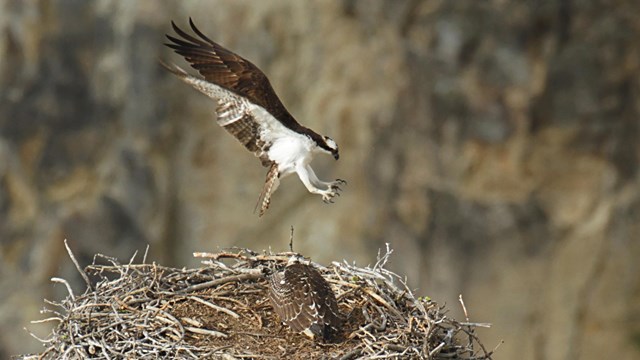
Osprey
Osprey summer in Yellowstone, fishing and raising young. 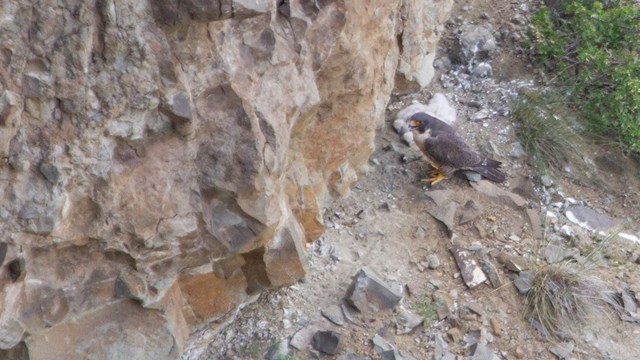
Peregrine Falcon
Peregrine falcons are some of the fastest birds. 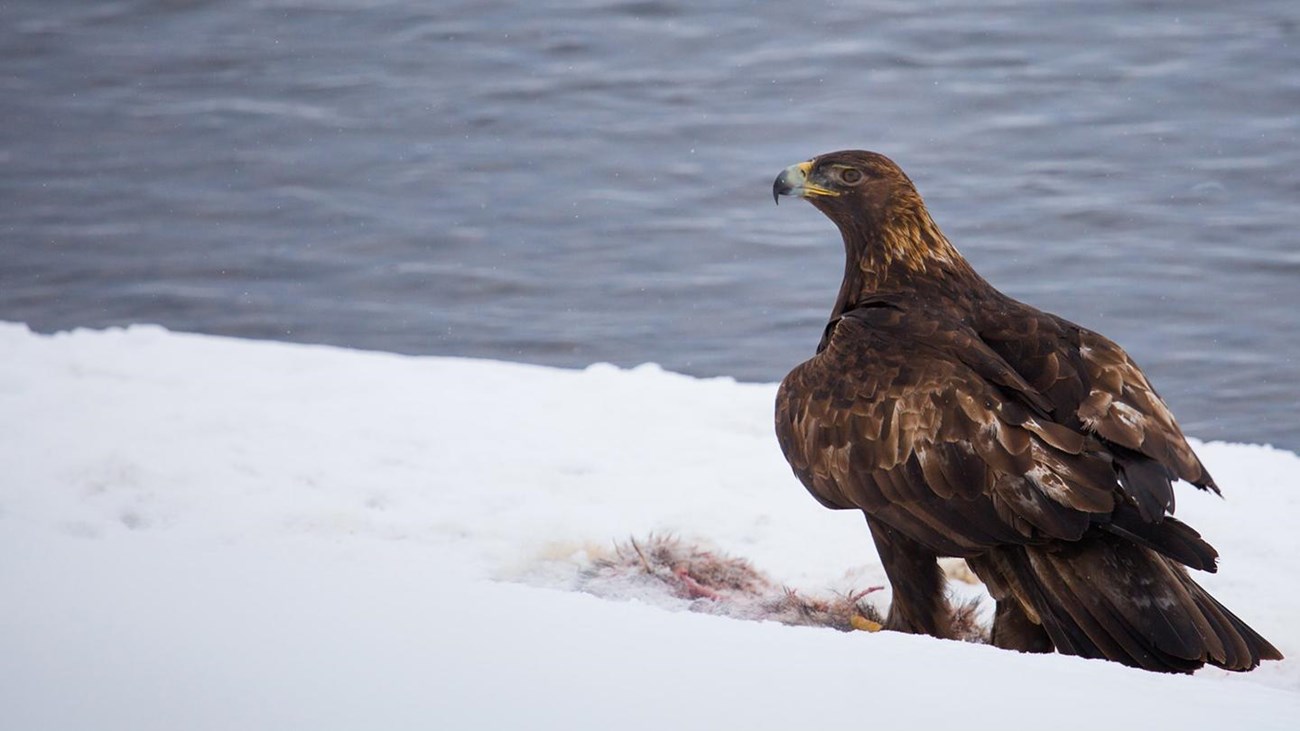
Golden Eagle
Golden eagles are named for the yellow feathers at the base of the neck. 
Colony Nesting Birds
American white pelicans and other colonial nesting birds nest primarily on the Molly Islands in the southeast arm of Yellowstone Lake. 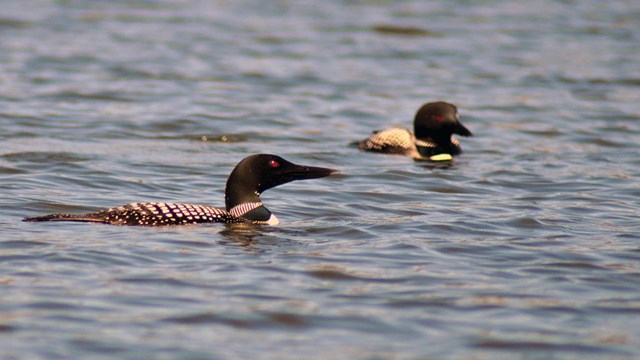
Common Loon
Loons in Yellowstone are some of the southern most breeding populations. 
Trumpeter Swan
Trumpeter swans are the largest wild waterfowl in North America. 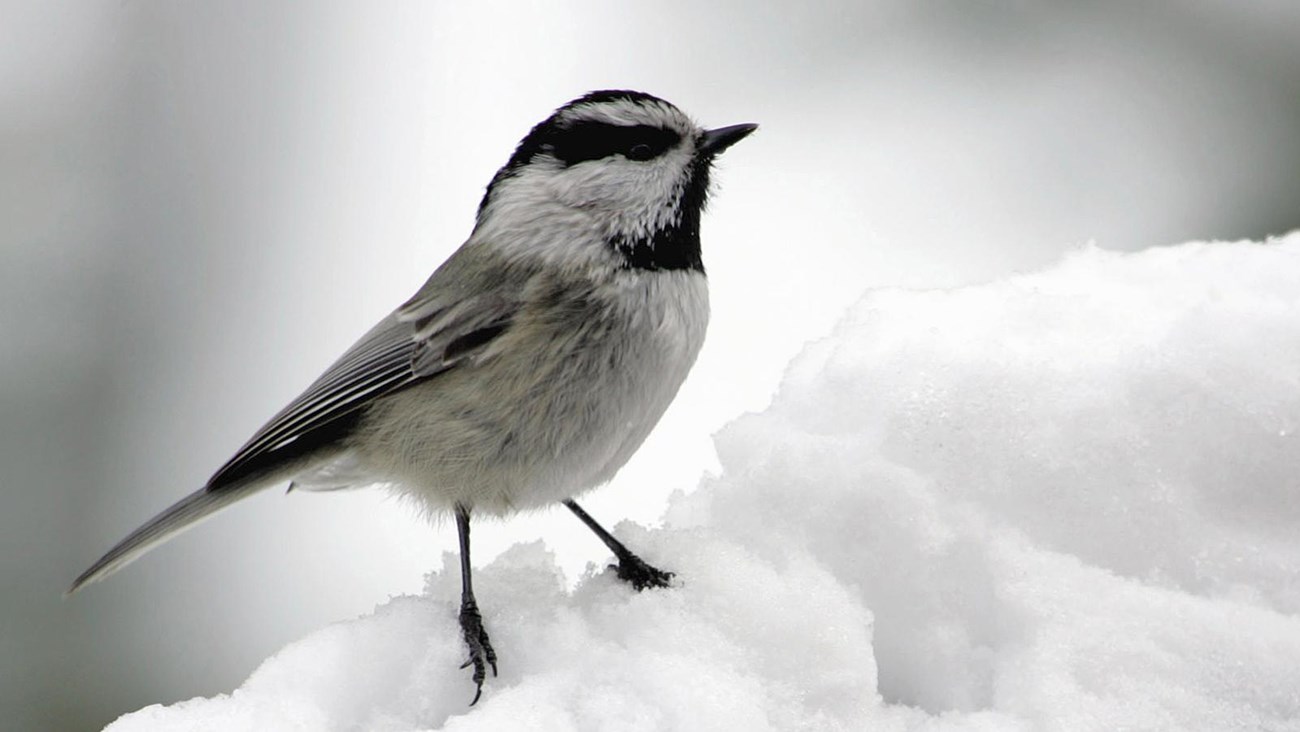
Songbirds and Woodpeckers
Passerine and near passerine species comprise the majority of bird species in Yellowstone. 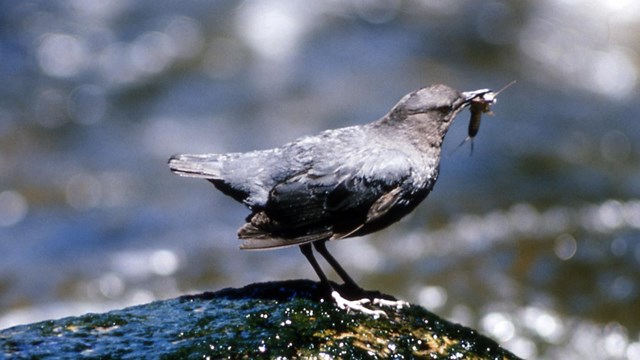
American Dipper
Also known as the water ouzel, these birds dive into water for aquatic insects. 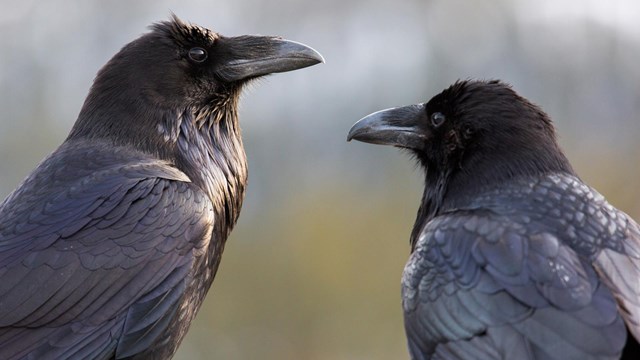
Raven
Ravens are smart birds, able to put together cause and effect. 
Sandhill Crane
Sandhill cranes nest in Yellowstone during the summer. 
Sound Library
Immerse yourself in the aural splendor of Yellowstone. 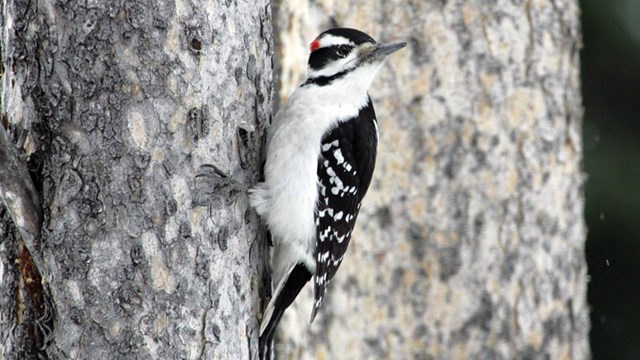
Birds
Spring is a wonderful time to look for birds, as migration brings many birds back to the park. |
Last updated: April 18, 2025
